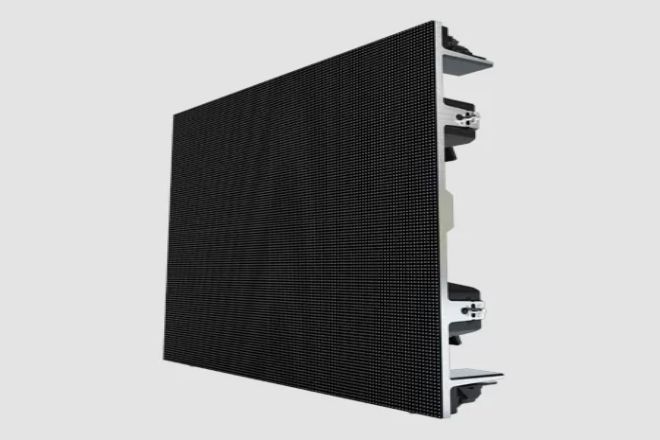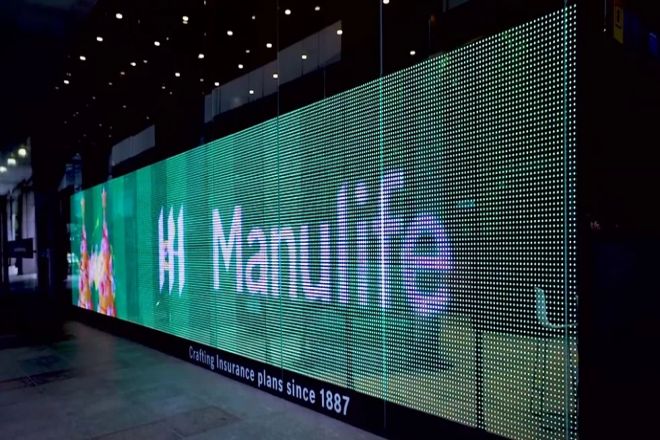소개

복잡성으로 인해 LED 디스플레이 기술과 생산 과정의 불확실성으로 인해 구매자가 제품을 받은 후 엄격한 검사를 실시하는 것이 특히 중요합니다.
검사는 LED 디스플레이의 품질, 성능 및 기대 효과를 보장하는 핵심 단계일 뿐만 아니라 공급업체의 제품 품질 관리 시스템을 테스트하는 것입니다. 검사를 통해 제품의 문제점과 단점을 제때 발견하고 사용 과정에서 예상치 못한 상황을 피하며 사용 효과와 안전성에 영향을 미칠 수 있습니다.
1. 검사 전 준비사항

- 구매계약서와 배송목록을 확인하세요.
물품을 검사하기 전에 먼저 해야 할 일은 구매 계약서를 자세히 확인하는 것입니다. 이 계약서는 구매자와 판매자 간의 계약으로, 구매한 LED 디스플레이의 모델, 사양, 수량, 가격 및 액세서리 목록을 자세히 설명합니다.
계약 내용을 주의 깊게 확인함으로써 구매한 LED 디스플레이 화면에 대한 명확한 이해를 확보하고 이후의 검사 작업에 대한 명확한 지침을 제공할 수 있습니다.
다음으로, 배송 목록을 확인해야 합니다. 배송 목록은 공급업체가 제공하며, 배송되는 상품에 대한 수량, 사양, 모델 및 기타 정보를 자세히 설명합니다.
배송 목록과 구매 계약을 비교함으로써 공급업체가 배송한 품목이 계약서의 합의와 일치하며 누락이나 오류가 없는지 확인할 수 있습니다. 질문이나 불일치 사항이 있는 경우 검사 전에 문제가 해결되었는지 확인하기 위해 공급업체와 적시에 연락해야 합니다.
- 필요한 검사도구를 준비하세요.
검사의 원활한 진행을 보장하기 위해 필요한 검사 도구를 준비해야 합니다. 이러한 도구에는 LED 디스플레이의 크기, 각도 및 기타 매개변수를 측정하는 데 사용되는 측정 도구(예: 눈금자, 커서 캘리퍼스, 각도 미터 등)가 포함되지만 이에 국한되지 않습니다.
테스트 기기(전압계, 전류계, 신호 발생기, 오실로스코프 등)는 LED 디스플레이의 성능 매개변수를 테스트하고, 전력선과 신호를 테스트합니다. 전선 및 기타 연결 장치는 LED 디스플레이를 연결하고 디스플레이 효과를 테스트하는 데 사용됩니다.
검사 도구를 준비할 때는 품질과 정확성에 주의해야 합니다. 고품질 검사 도구를 선택하면 측정 및 테스트 결과의 정확성을 보장하고 도구 문제로 인한 잘못된 판단을 피할 수 있습니다.
동시에, 검사 과정에서 효율적으로 작업할 수 있도록 검사 도구의 수가 충분한지 확인해야 합니다.
- 검사장소를 결정하세요.
적절한 검사 장소를 선택하는 것은 검사의 원활한 진행을 보장하는 데 필수적입니다. 무엇보다도 검사 장소는 환경 안전을 보장하고 현장 문제로 인한 사고를 피해야 합니다.
둘째, 현장은 습기와 먼지로 인한 LED 디스플레이 손상을 방지하기 위해 건조하고 먼지가 없는 상태로 유지해야 합니다. 또한 검사 현장은 검사 과정에서 LED 디스플레이의 모양과 디스플레이 효과를 명확하게 관찰할 수 있도록 적절한 조명 조건을 갖춰야 합니다.
검사 장소를 선택할 때, 우리는 또한 사이트의 크기와 레이아웃을 고려해야 합니다. 검사 장소는 구매한 LED 디스플레이 화면과 관련 검사 장비 및 도구를 수용할 만큼 충분히 넓어야 합니다.
동시에 현장의 배치는 합리적이어야 하며, 이는 검사 및 인력 운영에 편리해야 합니다. 필요한 경우 검사 현장에 해당 표지판과 경고 표지판을 설치하여 인력에게 안전에 주의하고 운영 절차를 준수하도록 상기시킬 수도 있습니다.
2. 외관검사
외관 검사는 LED 디스플레이 검사의 중요한 부분입니다. 외관 검사를 통해 운송 중에 LED 디스플레이가 손상되었는지, 생산 과정에서 품질 문제가 있는지를 미리 확인할 수 있습니다. 외관 검사의 자세한 단계는 다음과 같습니다.
- 포장 검사
우선, LED 디스플레이의 포장을 주의 깊게 확인해야 합니다. 포장은 운송 중 제품의 첫 번째 보호 장벽이며, 그 무결성은 제품의 안전에 직접 영향을 미칩니다.
포장이 손상되지 않고 손상, 변형, 물 얼룩 등이 없는지 확인해야 합니다. 손상 또는 변형된 경우 내부 제품이 손상되었는지 자세히 확인하고 적시에 공급업체와 연락해야 합니다.
- 표면 평탄도 검사
다음으로, LED 디스플레이 표면을 주의 깊게 관찰해야 합니다. 디스플레이 화면의 표면은 눈에 띄는 긁힘, 움푹 들어간 부분 또는 얼룩이 없이 평평해야 합니다. 이러한 결함은 제품의 외관과 아름다움에 영향을 미칠 뿐만 아니라 제품의 성능과 서비스 수명에도 영향을 미칠 수 있습니다. 따라서 검사 과정에서 이러한 세부 사항에 특별한 주의를 기울여야 합니다.
- 구조 부품 검사
표면 평탄도 외에도 LED 디스플레이의 구조적 구성 요소도 확인해야 합니다. 이러한 구성 요소에는 프레임, 브래킷 등이 포함되며, 이들의 견고성은 제품의 안정성과 안전성에 직접적인 영향을 미칩니다. 이러한 부분이 견고하고 느슨하거나 변형되지 않았는지 확인해야 합니다. 느슨하거나 변형된 부분이 발견되면 사용 중 잠재적인 안전 위험을 피하기 위해 공급업체와 적시에 연락해야 합니다.
외관 검사를 실시할 때는 조명과 시야각의 변화를 최대한 활용하여 여러 각도에서 제품을 관찰하여 검사의 포괄성과 정확성을 보장해야 합니다. 동시에 검사 중에 발견된 문제점도 기록하여 나중에 공급업체와 소통할 수 있도록 해야 합니다.
3. 기능 테스트

기능 테스트는 LED 디스플레이 검사 시 제품 성능과 품질을 보장하는 데 중요한 단계입니다.
일련의 기능 테스트를 통해 LED 디스플레이의 디스플레이 효과, 색상 성능, 회색조 수준, 해상도, 밝기, 대비와 같은 주요 지표를 종합적으로 평가하여 계약 요구 사항과 실제 적용 요구 사항을 충족하는지 확인할 수 있습니다. 다음은 기능 테스트를 위한 자세한 단계입니다.
- 전원 테스트
먼저 전원 테스트를 실시하고 전원 코드와 신호선을 연결하여 디스플레이 화면이 정상적으로 켜지는지 확인합니다. 전원을 켜는 동안 디스플레이 화면에 비정상적인 소리, 냄새 등이 있는지 주의 깊게 관찰해야 합니다. 이상이 있으면 즉시 전원을 끊고 원인을 확인해야 합니다.
- 디스플레이 테스트
다음으로 디스플레이 테스트를 수행하고 다양한 색상과 밝기의 테스트 패턴을 재생합니다. 테스트하는 동안 디스플레이 효과가 균일하고 불량점, 밝은 점 등이 없는지 주의 깊게 관찰해야 합니다. 불량점과 하이라이트는 LED 디스플레이 화면의 일반적인 품질 문제로, 전반적인 디스플레이 효과에 영향을 미칩니다. 불량점이나 하이라이트를 발견하면 위치와 수량을 기록하고 공급업체와 연락하여 처리해야 합니다.
- 그레이스케일 테스트
그레이스케일 테스트는 LED 디스플레이의 그레이스케일 레벨과 전환 효과를 평가하는 데 중요한 단계입니다. 그레이스케일 테스트 패턴을 재생하고 다양한 그레이스케일 레벨에서 디스플레이 효과를 관찰합니다. 이상적인 그레이스케일 테스트는 풍부한 그레이스케일 레벨과 자연스러운 전환 효과를 보여야 합니다. 문제가 있으면 기록하고 공급업체에 전달해야 합니다.
- 해상도 테스트
해상도 테스트는 LED 디스플레이의 선명도와 섬세함을 평가하는 데 사용됩니다. 고해상도 사진이나 비디오를 재생하고 디스플레이 효과가 선명하고 섬세한지 관찰합니다. 고해상도 이미지는 더 많은 세부 사항과 질감을 보여주고 시청 경험을 개선할 수 있습니다. 해상도가 표준에 미치지 못하는 경우 기록하고 공급업체에 전달해야 합니다.
- 밝기 및 대비 테스트
전문 기구를 사용하여 LED 디스플레이의 밝기, 대비 및 기타 매개변수를 측정하여 계약 요구 사항을 충족하는지 확인합니다. 밝기와 대비는 디스플레이 효과에 영향을 미치는 주요 요소 중 하나입니다. 적절한 밝기와 대비는 더 나은 시청 효과와 더 편안한 시청 경험을 제공할 수 있습니다.
매개변수가 요구 사항을 충족하지 못하는 경우, 이를 기록하고 공급업체에 전달해야 합니다.
기능 테스트를 수행할 때는 테스트 환경이 안정적이고 간섭이 없는지 확인하고 관련 테스트 표준 및 프로세스를 따라야 합니다. 테스터는 테스트 결과의 정확성과 신뢰성을 보장하기 위해 테스트 장비 및 계측기 사용에 익숙해야 합니다.
동시에 테스트 과정에서 얻은 데이터와 결과는 이후 분석 및 처리를 위해 기록되어야 합니다.
4. 소프트웨어 및 제어 시스템 검사
LED 디스플레이를 검사할 때 소프트웨어 및 제어 시스템을 검사하는 것은 디스플레이가 안정적으로 작동하고 사용자의 요구를 충족할 수 있는지 확인하는 데 중요한 부분입니다.
LED 디스플레이의 "두뇌"인 제어 시스템의 안정성과 기능은 디스플레이의 전반적인 성능에 직접적인 영향을 미칩니다. 다음은 소프트웨어 및 제어 시스템 검사를 위한 자세한 단계입니다.
- 소프트웨어가 제어 시스템과 일치하는지 확인하세요.
우선, 제어 시스템 소프트웨어가 디스플레이 하드웨어와 일치하는지 확인해야 합니다. 여기에는 소프트웨어 버전, 드라이버 등이 디스플레이의 모델 및 사양과 호환되는지 확인하는 것이 포함됩니다. 소프트웨어를 설치하고 구성하여 텍스트, 사진, 비디오 등을 포함하여 디스플레이의 디스플레이 콘텐츠를 정상적으로 제어할 수 있는지 테스트합니다.
테스트 과정에서는 소프트웨어가 끊김, 충돌 등의 현상 없이 안정적으로 실행될 수 있는지 확인하는 것이 필요합니다.
- 소프트웨어 작동 인터페이스를 확인하세요.
다음으로 소프트웨어의 조작 인터페이스가 친절하고 사용하기 쉬운지 확인합니다. 조작 인터페이스는 명확해야 하며, 각 기능 모듈의 레이아웃은 합리적이어야 하며, 식별하고 조작하기 쉬워야 합니다.
테스트 중에 디스플레이 콘텐츠 추가, 편집, 삭제 등 다양한 작업을 시도하여 소프트웨어의 사용 편의성과 안정성을 평가할 수 있습니다. 동시에 소프트웨어의 도움말 문서나 사용 설명서가 완전한지 확인해야 사용자가 사용 과정에서 문제에 직면했을 때 빠르게 해결책을 찾을 수 있습니다.
- 고급 기능 확인
기본적인 디스플레이 제어 기능 외에도 제어 시스템은 원격 작동, 시간 재생, 오류 알람 등과 같은 몇 가지 고급 기능도 가져야 합니다. 검사 과정에서 이러한 기능이 효과적이고 신뢰할 수 있는지 확인해야 합니다. 원격 작동 기능의 경우 네트워크 연결을 통해 원격 제어 능력과 안정성을 테스트할 수 있습니다.
시간 재생 기능의 경우, 다른 재생 시간과 콘텐츠를 설정하여 설정된 시간에 따라 자동으로 재생될 수 있는지 확인할 수 있습니다. 오류 알람 기능의 경우 오류 상황을 시뮬레이션하여 테스트할 수 있습니다. 시간에 맞춰 알람 신호를 발행하고 해당 오류 정보를 표시합니다.
소프트웨어 및 제어 시스템을 점검할 때 테스트 환경은 안정적이고 간섭이 없어야 하며 관련 테스트 표준 및 프로세스를 따라야 합니다. 동시에 테스트 결과도 기록하고 분석하여 후속 설치 및 디버깅을 용이하게 해야 합니다. 문제가 발견되거나 요구 사항을 충족하지 못하는 경우 공급업체와 적시에 연락하여 해결책을 찾아야 합니다.
5. 성능 테스트

LED 디스플레이 검사 과정에서 성능 테스트는 실제 응용 분야에서 제품의 안정적이고 효율적인 작동을 보장하는 핵심 링크입니다. 다음은 LED 디스플레이에 대한 몇 가지 중요한 성능 테스트에 대한 자세한 단계입니다.
- 안정성 테스트
안정성 테스트는 LED 디스플레이가 장기간 연속 작동 시 안정적인 작동을 유지할 수 있는지 평가하는 중요한 테스트입니다. 테스트하는 동안 고품질 비디오 또는 사진 자료를 선택하고 루프 재생 모드로 설정한 다음 연속 재생 중에 디스플레이에 깜빡임, 검은색 화면, 꽃 화면 또는 기타 오류가 있는지 관찰해야 합니다.
일반적으로 테스트 시간은 디스플레이가 다양한 작업 시나리오에서 안정적으로 작동할 수 있는지 확인하기 위해 몇 시간 이상 지속되어야 합니다.
- 방열성능 시험
방열 성능은 LED 디스플레이의 지속적이고 안정적인 작동을 위한 핵심 요소 중 하나입니다. 테스트하는 동안 정상적인 작동 조건에서 디스플레이의 냉각 팬 또는 방열판의 작업을 관찰해야 합니다.
방열 효과는 냉각 구성 요소의 온도를 만지거나 전문적인 온도 측정 장비를 사용하여 감지할 수 있습니다. 방열이 좋지 않으면 디스플레이 온도가 상승하여 성능과 수명에 영향을 미칠 수 있습니다.
따라서 디스플레이의 방열 시스템이 열을 효과적으로 발산하고 디스플레이의 정상적인 작동 온도를 유지할 수 있는지 확인하는 것이 필요합니다.
- 보호 성능 테스트
보호 성능 시험은 LED 디스플레이가 다양한 혹독한 환경에서 정상적으로 작동할 수 있는지 평가하는 핵심 시험입니다. 시험 중에 디스플레이 화면이 방수, 방진, 부식 방지 및 기타 보호 조치를 갖추고 있는지 확인하고 효과를 검증해야 합니다.
디스플레이 화면의 보호 성능은 물, 모래 폭풍, 부식성 가스 등 다양한 환경 조건을 시뮬레이션하여 테스트할 수 있습니다.
동시에 디스플레이 화면의 방수 인터페이스, 방진 메시 및 기타 구성 요소가 실제 응용 분야에서 다양한 혹독한 환경의 침식을 효과적으로 견딜 수 있는지 확인하기 위해 양호한 상태인지 확인할 수도 있습니다.
성능 테스트를 수행할 때는 실제 사용을 시뮬레이션하기 위해 테스트 환경이 실제 사용 시나리오와 유사한지 확인해야 합니다. 동시에 후속 분석 및 평가를 위해 테스트 프로세스 동안 데이터와 결과를 기록하는 것도 필요합니다.
테스트 결과 LED 디스플레이에 성능 문제가 있거나 요구 사항을 충족하지 못하는 경우, 적절한 시기에 공급업체와 협의하여 해결책을 모색해야 합니다.
결론
간단히 말해서 LED 디스플레이 검사는 구매자가 전문적인 지식과 기술을 갖추어야 하는 중요하고 복잡한 작업입니다. 이 글을 공유함으로써 여러분께 유용한 참고 자료와 도움을 제공하여 LED 디스플레이를 구매할 때 더 현명하고 차분해질 수 있기를 바랍니다.
마지막으로 LED에 대해 더 알고 싶다면, 우리에게 연락해주세요.
